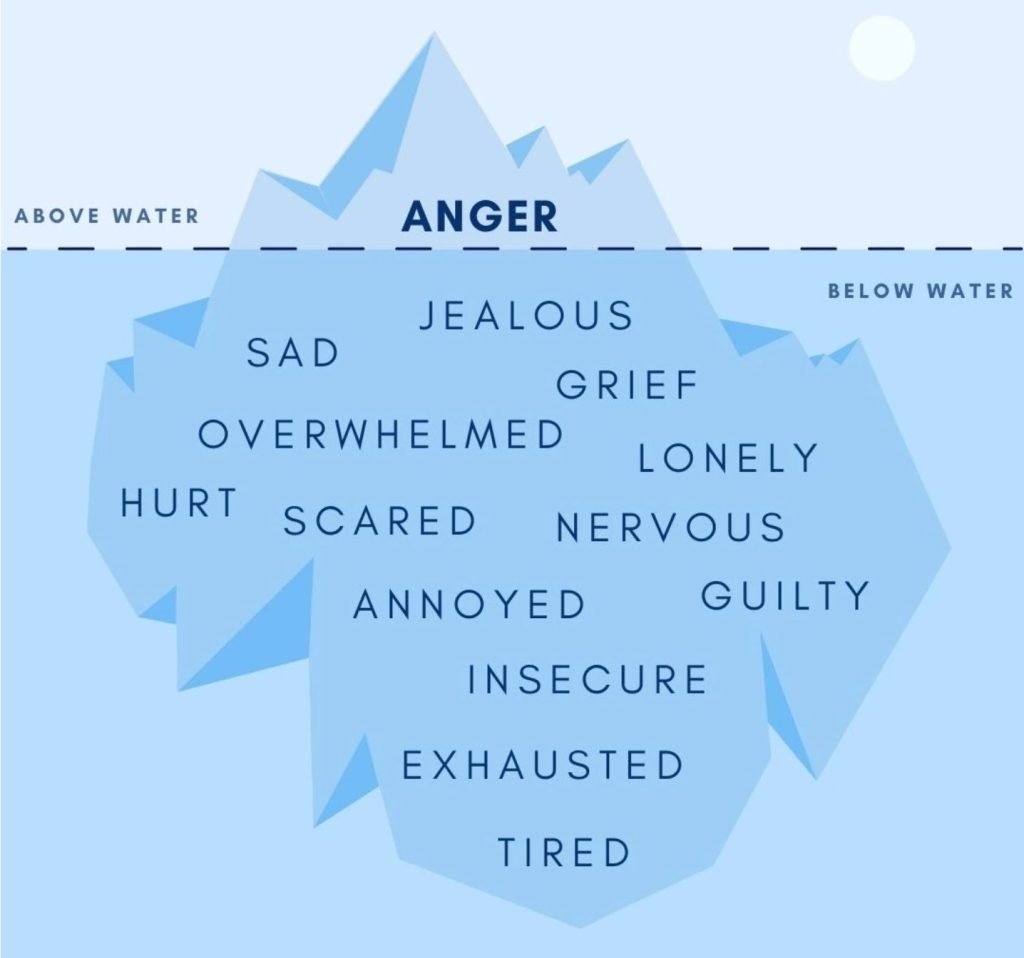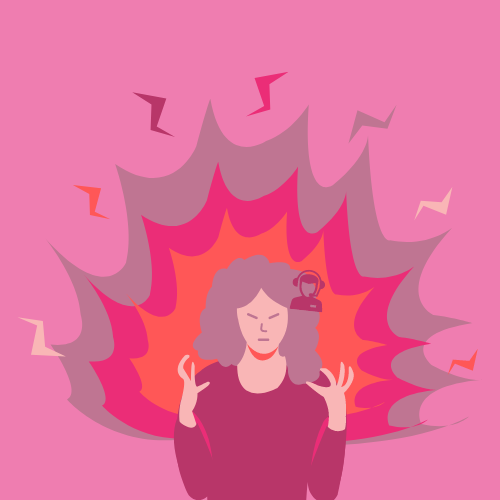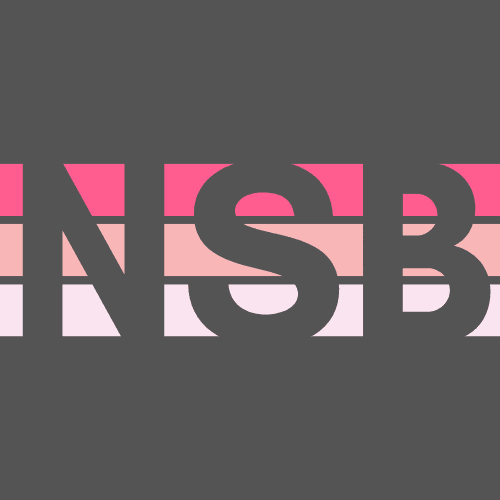Anger is a very powerful emotion. It’s one of our most primitive emotions.
It is there to protect us.
Our body is giving a signal that something doesn’t feel right to us.
Anger can display our true feelings and our authentic self.
There are many different reasons why we might feel angry. We can feel anger at having been treated badly or unfairly by others. It may be a reaction to difficult experiences in our daily life, our past, or in the world around us.
It only becomes bad when we harmfully react with our anger to others.
Signs of anger can include:
- Fast heartbeat
- Quick breathing
- Tension in your shoulders
- Clenching your firsts
For years I have thought my anger was a problem and tried anger management to heal or work with anger, as anger is often seen as a negative emotion that we need to suppress, overcome or calm down.
We often try to control our children’s temper tantrums and angry outbursts. For example, when I was a child, I was told I had an ‘ugly face’ when I was angry and would be shouted at and then ignored. With my children I have sometimes asked them to ‘go to their room and calm down’, which I now realise is wrong of me as a parent.
Furthermore, based on gender stereotypes as women we are often discouraged from expressing anger.
Sometimes being angry can give us the belief that there is something wrong with us due to these past experiences and lead us to suppress our anger even more, because we believe that it isn’t desired and may lead to confrontation or rejection.
How we can use Anger healthily
Healthy anger means observing and experiencing anger without being overwhelmed by it and reacting to it.
Recognising our anger is giving us a signal to explore the feelings, thoughts, and bodily sensations that precede it.
Viewing anger as a signal to direct our attention inward to identify our core desires, needs, and values.
Developing self-compassion, which includes skills to enhance our sense of safety and connection.
Strategies to let go of anger, which may include forgiving others and yourself.
Compassionate practices that don’t cause suffering for others or for ourselves.
Learning how to communicate assertively with others.
Anger enhances our resilience and overall well-being.
Recognise anxiety, fear and anger
When we experience anger, it’s because we may be feeling anxiety, or fear. We then have a ‘fight’ response to this.
It is important to ask yourself what you could be scared of, this can give you a choice about how you might respond to a trigger.
You might be angry that something has not gone your way. But you may also fear that you could be blamed or hurt as a result. Recognising this might help you to think and act differently.
The Anger Iceberg
As above Anger is usually a secondary emotion to something else.
The anger iceberg is a metaphor used in psychology to illustrate that anger is often just the visible tip of a deeper emotional issue. Like an iceberg, what we see on the surface is only a small part of the whole. Beneath anger, there can be underlying emotions such as hurt, fear, or frustration that need to be explored and addressed to effectively manage and understand anger.

Understanding the primary emotion beneath the surface is crucial because it allows us to address the root cause of our feelings and make more informed decisions.
When Anger is unhealthy
If anger is frequent, intense, lasts a long time, or are out of proportion to the triggering event, the emotion can have problematic effects on our wellbeing and our health. We also need to address anger if it escalates into violence.
Ways you can help yourself work through the anger
Identify what’s hurting in you, then give yourself compassion, affirmation and presence.
In your head or out loud, this can sound like:
- I recognise that my anger is a signal that something is not ok with me.
- I get to feel angry without hurting myself or others.
- My anger is a natural feeling, not something bad or wrong.
- I can feel angry and it doesn’t get to control me or my actions.
Anger has what’s called an accompanying “motor program” to fight, protect and/or defend. This means that your muscles want to go into action, so let them. Here are some safe ways:
- Push against a wall until your body doesn’t want to push anymore or gets fatigued.
- Clench your fists and feel the tension in your fists until they naturally want to unclench.
- Work out and make sure you are feeling into your body as you expend all that juicy life force energy.
- Try plank pose or chair pose until you can’t do it anymore.
Conclusion embrace your anger
Our anger is valid, and it has the right to be heard. By accepting and embracing our anger, we can start to feel whole again.
We should allow it to be present and acknowledge its validity. By embracing our it, we empower ourselves to speak up and express what is on our minds.
Anger is a legitimate emotion that brings something to us. It helps us set boundaries and protects us from situations that don’t feel right. When we listen to it, we can reconnect with our bodies and ground ourselves. By doing so, we can find a sense of authenticity and inner strength.



